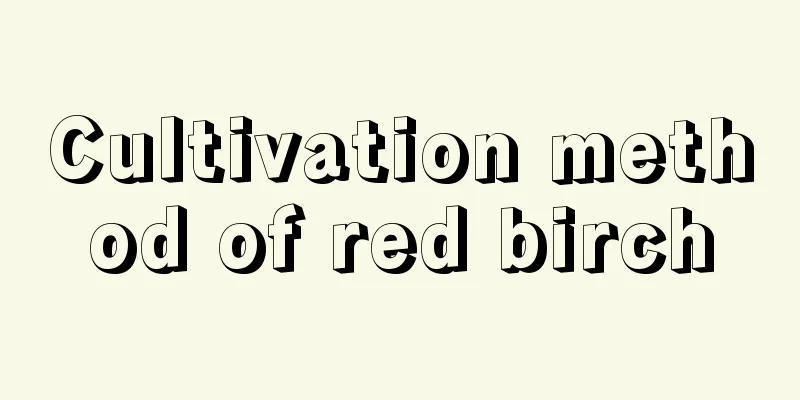How to grow Phalaenopsis in pots

1. Breeding environment1. Soil: Choose loose soil with moss and aquatic plants as the main medium. You can also use bark, charcoal, etc. 2. Light: Phalaenopsis is a plant that likes shade. Summer is its peak growth period. When the sunlight is too strong, it must be shaded to avoid the leaves being burned. The shading material can be removed after October. 3. Temperature: The suitable growth temperature for Phalaenopsis is 18-28℃. In summer, the plant should be placed in a cool and ventilated place to help it survive the summer. In winter, the indoor temperature is sometimes below 10℃, which is not conducive to growth, so move it to a warmer place for growth. 4. Water: Do not splash water on the leaves when watering, otherwise it will cause leaf rot and other phenomena. In spring and summer, water once a day and spray 2-3 times appropriately. In autumn and winter, reduce the amount of watering and watering can be controlled to once every 2-5 days. 5. Fertilization: You can choose potassium dihydrogen phosphate or special fertilizer for orchids. The fertilizer concentration is about 0.1%-0.2%. 2. Breeding Methods1. Pedicel germination method: first cut off the flowers, use a sterilized blade to remove the bracts on the upper end of the pedicel to expose the internode buds; use a cotton swab or sponge to apply germination agents or other hormones on the buds; place the treated plants in a semi-shaded place, maintain the optimal temperature of 25-28°C, grow new leaves after 2-3 weeks, and grow into Phalaenopsis seedlings after 3 months; cut the seedlings and transplant them into pots. 2. Heart-breaking germination method: first cut off the highest heart leaf at the top to destroy the growth point on the stem tip; after the wound is dried, choose a suitable disinfectant to apply to the node, and new buds will grow after 2-3 weeks; finally, after the new buds grow up, cut the growing seedlings and plant them, and you can get a new plant. 3. Pests and diseases1. Anthracnose: It may be caused by lack of ventilation, so it should be placed in a cool and ventilated place for growth, and sprayed with Bordeaux liquid for disinfection. 2. Gray mold: The disease and spots may occur due to moisture. Pay attention to keeping the plant's growth environment dry during cultivation. |
<<: How to fertilize potted jasmine
>>: How to deal with Phalaenopsis after flowering
Recommend
When is the best time to take cuttings of climbing roses (Rose cutting time and season)
When can climbing roses be propagated by cuttings...
Planting methods and management of long beans
Long beans , also known as green beans and string...
How to trim the cinnabar plum to look good
When is the best time to prune the cinnabar plum?...
What to do if the lucky bamboo stem turns yellow? How to give first aid
1. Control water and turn the soil Reason: During...
Add some ingredients to beer, Gardenia rose... blooms continuously for 8 months, and can bloom 100 flowers at a time!
Beer + vitamin B12, gardenias are big and white! ...
Cutting propagation method of Schefflera chinensis
1. Prepare the soil Choose some cleanly sieved ri...
How to prune climbing roses
Pruning methods Before pulling the climbing roses...
Suitable temperature for leek growth, leek growth cycle
1. Suitable temperature for growth The suitable t...
Fertilizing is simple, but are you doing it right? Learn this method and it will be easier to bloom
There are many things to pay attention to when fe...
How to grow jade plant to make it look beautiful: (How to grow jade plant into a small old tree)
It is not difficult to grow jade dew well by mast...
Can shrimp shells be used as fertilizer?
Shrimp shells as fertilizer Shrimp shells can be ...
The spider plant he grew was two fingers wide and its leaves never dried up or turned yellow, all because he did this!
1. How to grow spider plants to 2 meters wide 1. ...
What are the cultivation methods and precautions of Buddha beads spider plant
Introduction of Chlorophytum comosum The Buddha B...
What is the flower language of peony?
The Flower Language of Peony The peony has a broa...
Can ginseng be grown in the south?
Can ginseng be grown in the south? Ginseng cannot...









